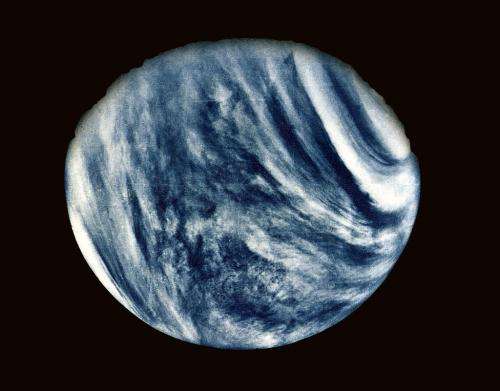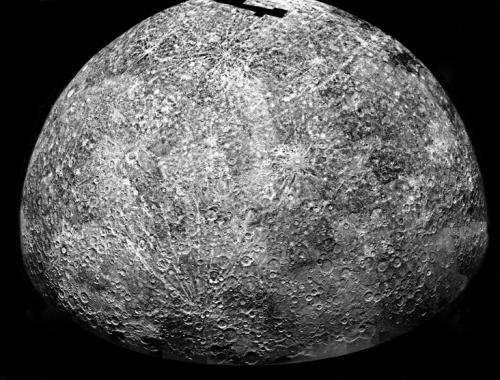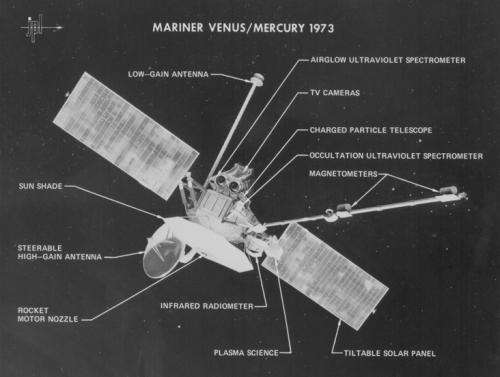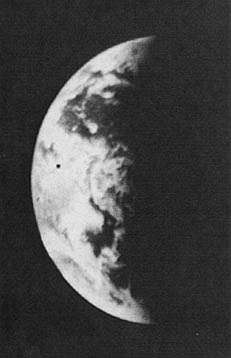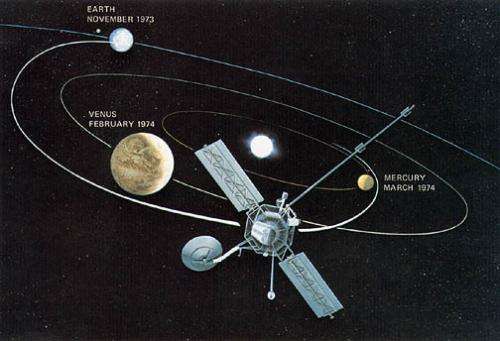On Feb. 5, 1974, NASA’s Mariner 10 mission took this first close-up photo of Venus during 1st planetary gravity assist flyby. Credit: NASA
Exactly 40 Years ago today on Feb. 5, 1974, Mariner 10, accomplished a history making and groundbreaking feat when the NASA science probe became the first spacecraft ever to test out and execute the technique known as a planetary gravity assisted flyby used to alter its speed and trajectory in order to reach another celestial body.
Mariner 10 flew by Venus 40 years ago to enable the probe to gain enough speed and alter its flight path to eventually become humanity's first spacecraft to reach the planet Mercury, closest to our Sun.
Indeed it was the first spacecraft to visit two planets.
During the flyby precisely four decades ago, Mariner 10 snapped its 1st close up view of Venus – see above.
From that moment forward, gravity assisted slingshot maneuvers became an extremely important technique used numerous times by NASA to carry out planetary exploration missions that would not otherwise have been possible.
For example, NASA's twin Voyager 1 and 2 probes launched barely three years later in 1977 used the gravity speed boost to conduct their own historic flyby expeditions to our Solar Systems outer planets.
Without the flyby's, the rocket launchers thrust by themselves did not provide sufficient interplanetary speed to reach their follow on targets.
NASA's Juno Jupiter orbiter just flew back around Earth this past October 9, 2013 to gain the speed it requires to reach the Jovian system.
Mariner 10′s Mercury. This is a photomosaic of images collected by Mariner 10 as it flew past Mercury on 29 March 1974. It shows the southern hemisphere. The spacecraft took more than 7,000 images of Mercury, Venus, the Earth, and the moon during its mission. Credit: NASA
The Mariner 10 probe used an ultraviolet filter in its imaging system to bring out details in the Venusian clouds which are otherwise featureless to the human eye – as you'll notice when viewing it through a telescope.
Venus surface is completely obscured by a thick layer of carbon dioxide clouds.
The hellish planet's surface temperature is 900 degrees Fahrenheit.
Diagram of Mariner 10 which flew by Venus and Mercury in 1974 and 1975. This photo identifies various parts of the spacecraft and the science instruments, which were used to study the atmospheric, surface, and physical characteristics of Venus and Mercury. This was the sixth in the series of Mariner spacecraft that explored the inner planets beginning in 1962. Credit: Jet Propulsion Laboratory
Following the completely successful Venus flyby, Mariner 10 eventually went on to conduct a trio of flyby's of Mercury in 1974 and 1975.
It imaged nearly half of the planets moon-like surface.
Mercury was not visited again for over three decades until NASA's MESSENGER flew by and eventually orbited the planet – and where it remains active today.
Mosaic of the Earth from Mariner 10 after launch. Credit: NASA
Mariner 10 was launched on Nov. 3, 1973 from the Kennedy Space Center atop an Atlas-Centaur rocket.
Shortly after blastoff if also took photos of the Earth and the Moon.
Ultimately it was the last of NASA's venerable Mariner planetary missions hailing from the dawn of the Space Age.
Mariner 11 and 12 were descoped due to congressional budget cuts and eventually renamed as Voyager 1 and 2.
Mariner 10 trajectory and timeline to Venus and Mercury. Credit: NASA
The Mariner 10 science team was led by Bruce C. Murray at the Jet Propulsion Laboratory (JPL).
Murray eventually became the Director of JPL. After he passed away in 2013, key science features on Martian mountain climbing destinations were named in his honor by the Opportunity and Curiosity Mars rover science teams.
Source: Universe Today
